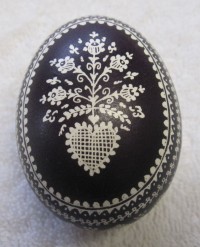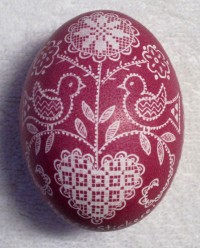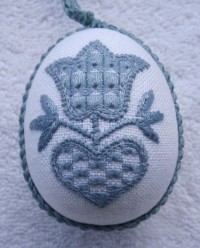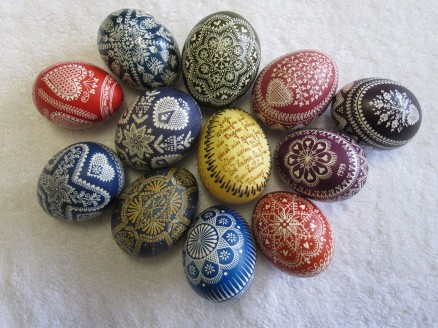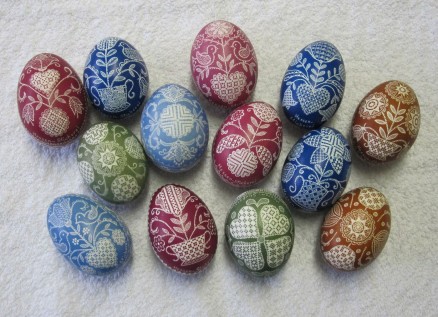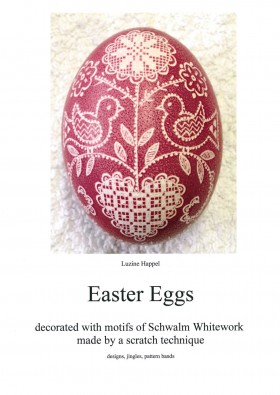As in other parts of the world, decorating eggs for Easter has also been a long tradition in Hessia. In this region there are three different techniques used to decorate eggs:
- The wax-resist or batik method
- The scratch technique
- Embroidery with Schwalm Whitework motifs
I present the first two techniques here, the third–with detailed instructions–will be posted soon.
The wax-resist or batik method
In the region surrounding Marburg raw chicken eggs (today, blown out chicken eggs are also used) are first decorated–with images and written sentiments–using wax in accordance with ancient custom. Then these eggs are dyed and afterwards the wax is removed.
One can find out more about this technique and the patterns used here:
www.margot-bieker.de
The scratch technique
Large blown out chicken eggs with white eggshell are dyed first and then the pattern is scratched out. This technique is well known in many regions, unique here are the patterns; motifs of Schwalm Whitework are scratched into the front of the egg, short verses in old German letters http://www.suetterlinschrift.de/index.html are engraved into the back, and an encircling band with “Openwork patterns“ divides the front of the egg from the back.
Because such eggs are rare, I have published a 23-page leaflet showing 23 different decorated Easter eggs. Included on each page is: a line drawing of the front motif, which–depending on the design–could be used for Schwalm Whitework; the translation of the verse; a colored picture of the pattern band; an image of the same pattern band embroidered.
This lovely and informative leaflet has a plastic comb binding, and you may order it through my Shop.

